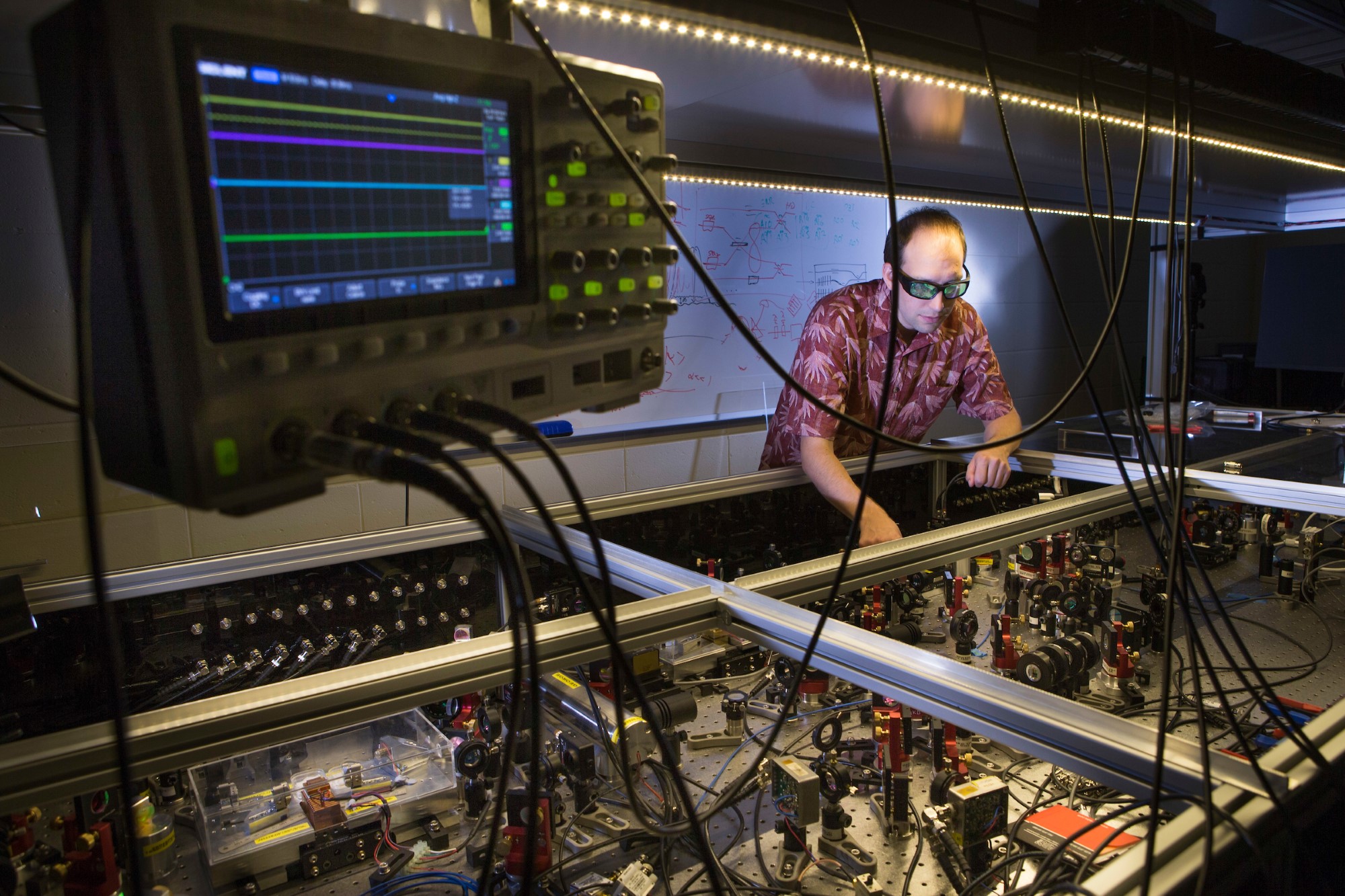
Research projects
Discover the forefront of astronomy and astrophysics through our projects, ranging from deep-space communication systems to groundbreaking adaptive optics. Explore our diverse, ongoing research initiatives shaping the future of space science.
Displaying 46 - 60 of 172 project(s).
In each project, students will utilise data from some of the world’s most powerful radio telescopes, including ASKAP, Parkes, and the Jansky VLA to study the magnetised gas in and around the radio lobes inflated by supermassive black holes.
Theme
- Black hole phenomena
- Structure and evolution of the Cosmos
Student intake
Open for Bachelor, Honours, PhD students
Observatory
People
- Dr Craig Anderson, Supervisor
Data archives
Theme
- Black hole phenomena
- Galactic archaeology
- Instrumentation
- Stellar and planetary astronomy
- Structure and evolution of the Cosmos
This project aims to study quenching in a unique rejuvenated/quenching galaxy found in deep Hubble/James Webb Space Telescope imaging data.
Theme
- Structure and evolution of the Cosmos
Student intake
Open for Honours students
Observatory
People
- Associate Professor Emily Wisnioski, Supervisor
- Dr Trevor Mendel, Collaborator
This project aims to study quenching in a unique rejuvenated/quenching galaxy found in deep Hubble/James Webb Space Telescope imaging data.
Theme
- Structure and evolution of the Cosmos
Student intake
Open for Honours students
Observatory
People
- Associate Professor Emily Wisnioski, Supervisor
- Dr Trevor Mendel, Collaborator
This project involves instrument modelling, science simulation, electro-optical, and system design of a compact spatial heterodyne spectrograph instrument.
Theme
- Instrumentation
Containerised applications can improve modularity when interfacing hardware from different vendors across a variety of machines.
Theme
- Instrumentation
Student intake
Open for Bachelor, Honours students
People
- Dr Jesse Cranney, Supervisor
- Dr Michael Copeland, Supervisor
Containerised applications can improve modularity when interfacing hardware from different vendors across a variety of machines.
Theme
- Instrumentation
Student intake
Open for Bachelor, Honours students
People
- Dr Jesse Cranney, Supervisor
- Dr Michael Copeland, Supervisor
The aim of this research is to determine the correlation of the tip-tilt to confirm that the downlink can be used as a reliable reference source for adaptive optics applied to the uplink signal.
Theme
- Instrumentation
Dust in the Milky Way affects astronomical observations. Here we try too improve our knowledge of its distribution.
Theme
- Galactic archaeology
Observatory
Magnetic fields are present throughout the universe on all scales: from planets and stars, star-forming clusters and spiral arms, entire galaxies, to galaxy clusters and cosmic filaments.
Theme
- Galactic archaeology
- Structure and evolution of the Cosmos
This project aims to conceptualize a UV astronomical space mission to explore the interstellar medium (ISM) in the Milky Way and nearby Local Group Galaxies. Utilizing recent UV coating and detector advancements, the proposed mission involves high-throughput, compact UV spectroscopic instruments.
Theme
- Instrumentation
- Structure and evolution of the Cosmos
Student intake
Open for Bachelor, Honours students
People
- Dr Andrew Battisti, Supervisor
- Dr Joice Mathew, Supervisor
This project aims to conceptualize a UV astronomical space mission to explore the interstellar medium (ISM) in the Milky Way and nearby Local Group Galaxies. Utilizing recent UV coating and detector advancements, the proposed mission involves high-throughput, compact UV spectroscopic instruments.
Theme
- Instrumentation
- Structure and evolution of the Cosmos
Student intake
Open for Bachelor, Honours students
People
- Dr Andrew Battisti, Supervisor
- Dr Joice Mathew, Supervisor
Ultraviolet photometry has revealed that young open clusters in the Milky Way display extended main sequence turn-off in the colour magnitude diagram.
Theme
- Galactic archaeology
- Stellar and planetary astronomy
Student intake
Open for Bachelor, Honours students
People
- Associate Professor Luca Casagrande, Supervisor
This honours thesis project was based on data obtained from the HAT-South survey. The HAT-South project is a survey of the southern sky with telescopes in Chile, South Africa and Australia, taking 240 second exposures with a 4.5 minute cadence.
Theme
- Stellar and planetary astronomy
In this project you will develop use and further develop the Chronostar tool to identify thousands of previously unknown young stars near the sun - ideal targets for future exoplanet detection campaigns.
Theme
- Stellar and planetary astronomy
